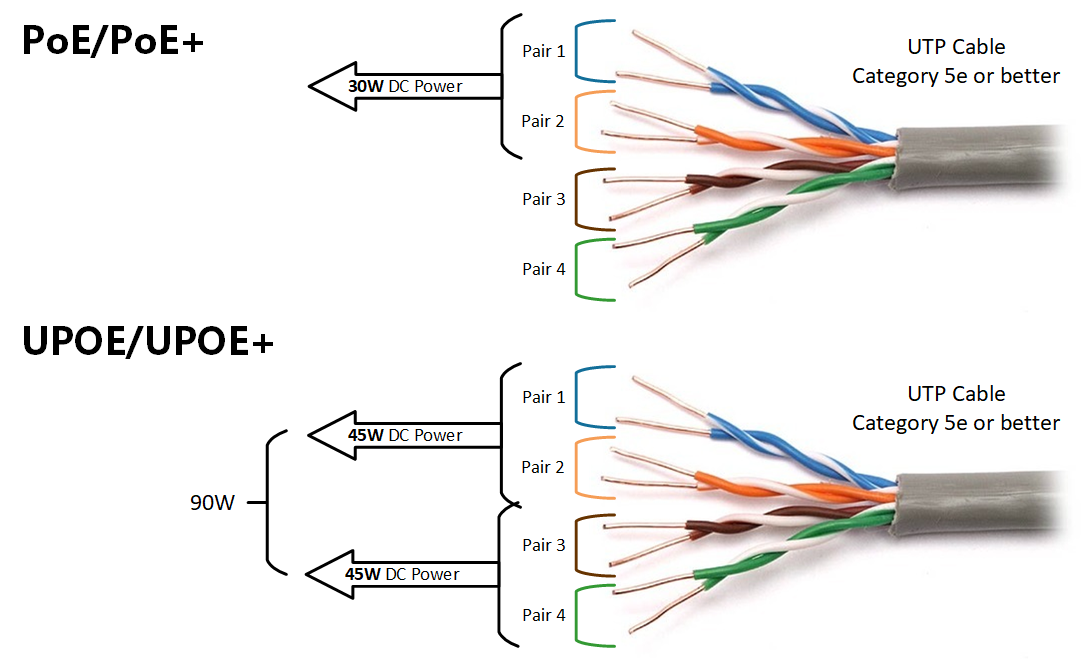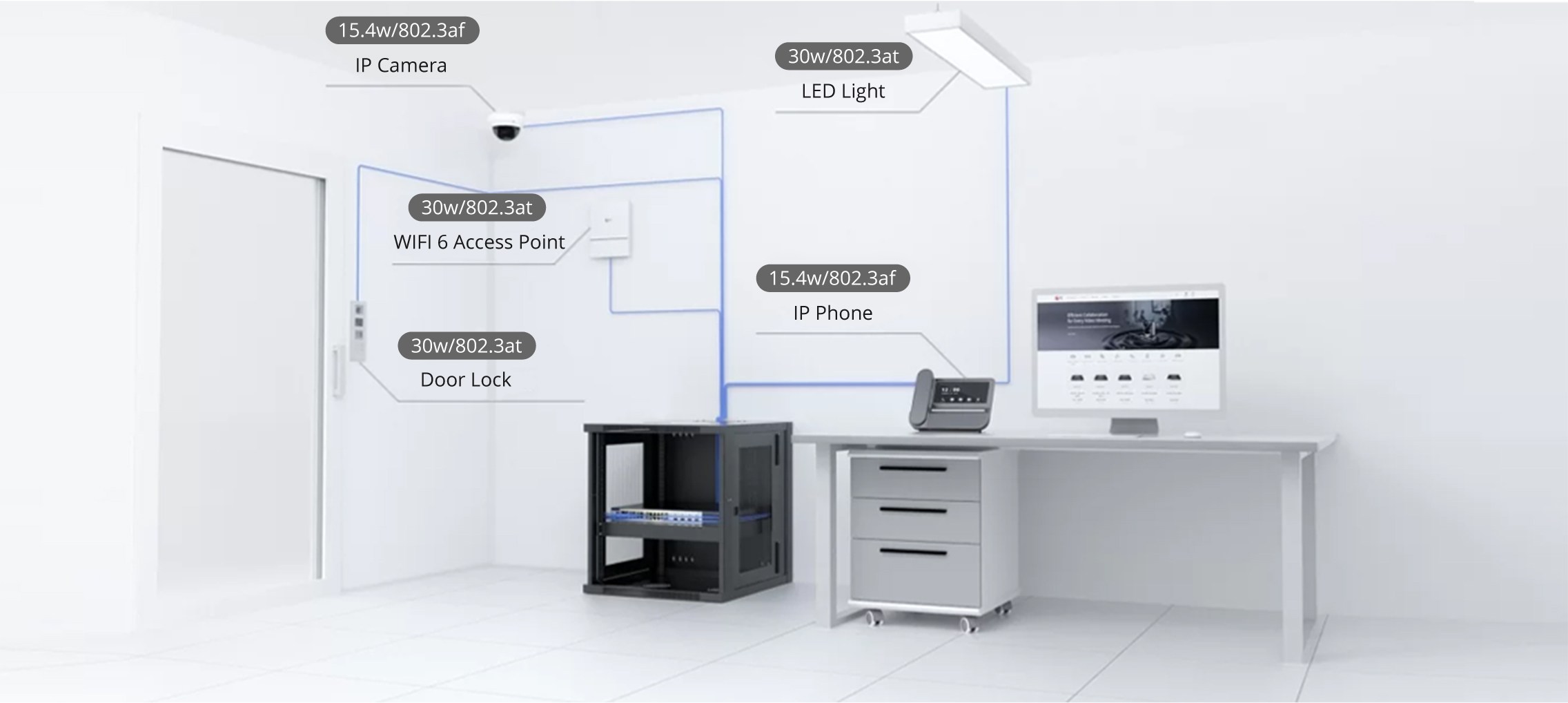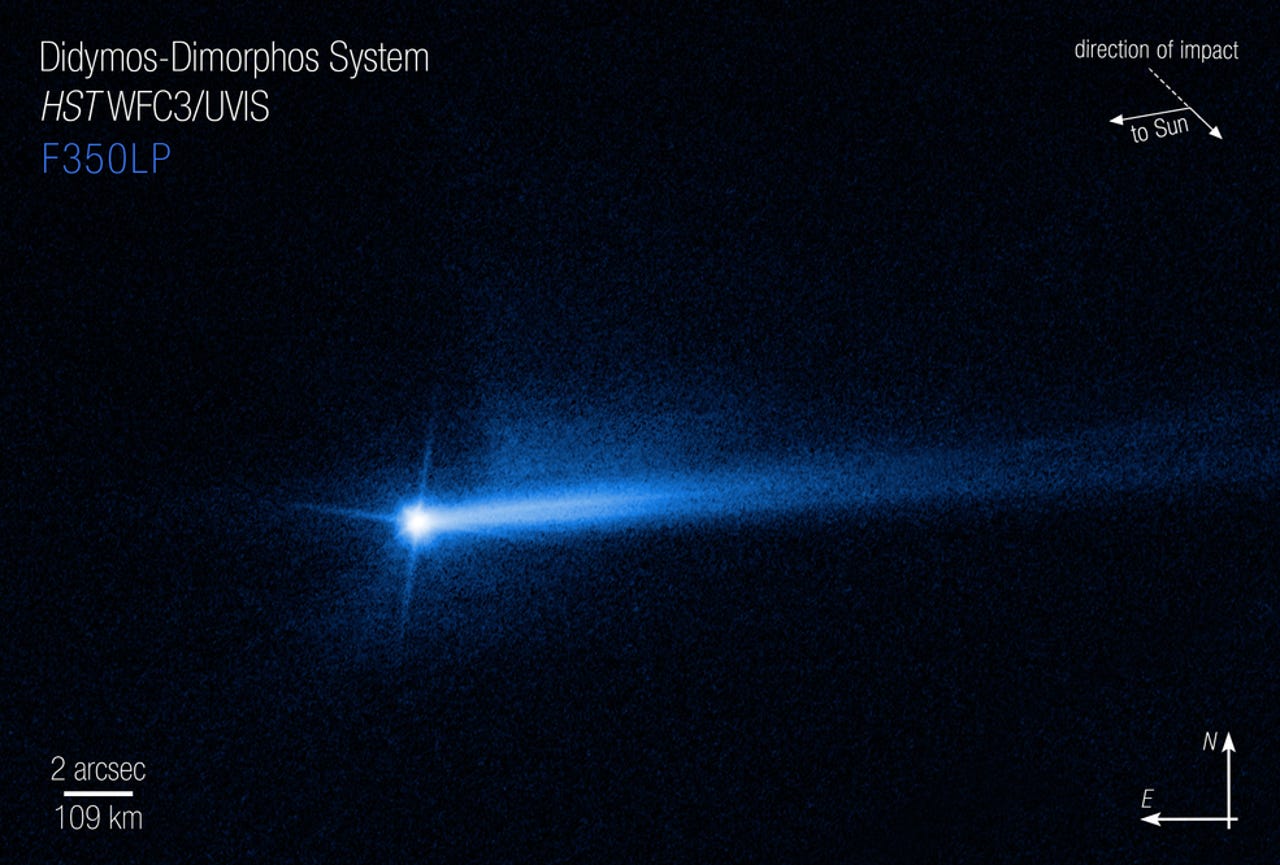































 Image: NASA, ESA, STScI, Jian-Yang Li (PSI); Image Processing: Joseph DePasquale
Image: NASA, ESA, STScI, Jian-Yang Li (PSI); Image Processing: Joseph DePasquale NASA intentionally crashed a spacecraft into the Dimorphos asteroid in its Double Asteroid Redirection Test (DART) mission last month. Since impact, telescopes have captured images of the fascinating aftermath. Now, new Hubble images show that the asteroid grew not only one, but two tails.
A week after the impact, the SOAR Telescope in Chile captured an image of the Dimorphos asteroid which showcased one tail, a comet-like bright streak of dust, emerging from the asteroid and stretching across the sky.
Mission success!
- Hubble (@NASAHubble) October 11, 2022
The#DARTMission planetary defense test altered the orbit of a nonhazardous asteroid.
This Hubble image shows the asteroid several days after a spacecraft intentionally crashed into it, with debris blasted from its surface in a tail: https://t.co/ni1RVMpIEc pic.twitter.com/qTqnInBrTU
In an unexpected development, the Hubble telescope has recently captured an image of the Dimorphos asteroid which shows the emergence of a second tail.
New#DARTMission image just dropped!
- Hubble (@NASAHubble) October 20, 2022
Last month, @NASA crashed a spacecraft into a non-threatening asteroid in a test of planetary defense.
This new Hubble image shows a surprising update -two tails of dust ejecting from the impacted asteroid system: https://t.co/kRZ3XAvJlE pic.twitter.com/MfUCWy2REX
Hubble has made a total of 18 observations of the system since the impact. The imagery indicates that this second tail was formed between October 2 and October 8. Despite the second tail being a surprise, similar behavior is often seen in comets and active asteroids, according to NASA.
The kinetic impact that resulted from the spacecraft crashing into the asteroid caused dust particles and debris, ejecta, to emerge in space. Studying the ejecta allows scientists to learn about the effects of the impact, such as the changes in the asteroid's course and information about the asteroid's surface.
NASA is unsure about the relationship between the comet-like tail and other ejecta features but reassures the public that the Investigation Team is currently working to get answers. In upcoming months, the scientists will be taking a closer look to determine why or how the asteroid developed a second tail.
 Hot Tags :
Innovation
Space
Hot Tags :
Innovation
Space